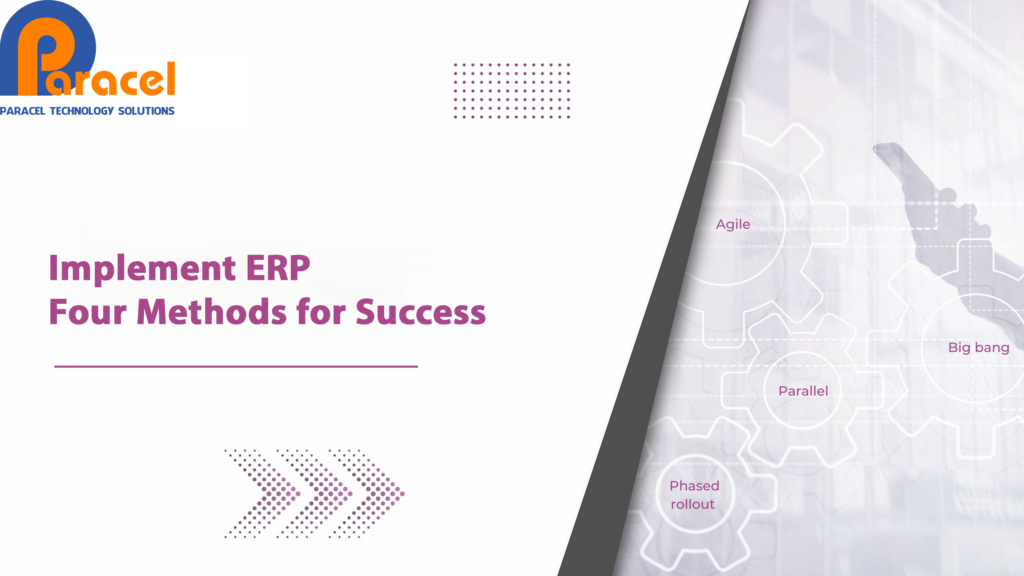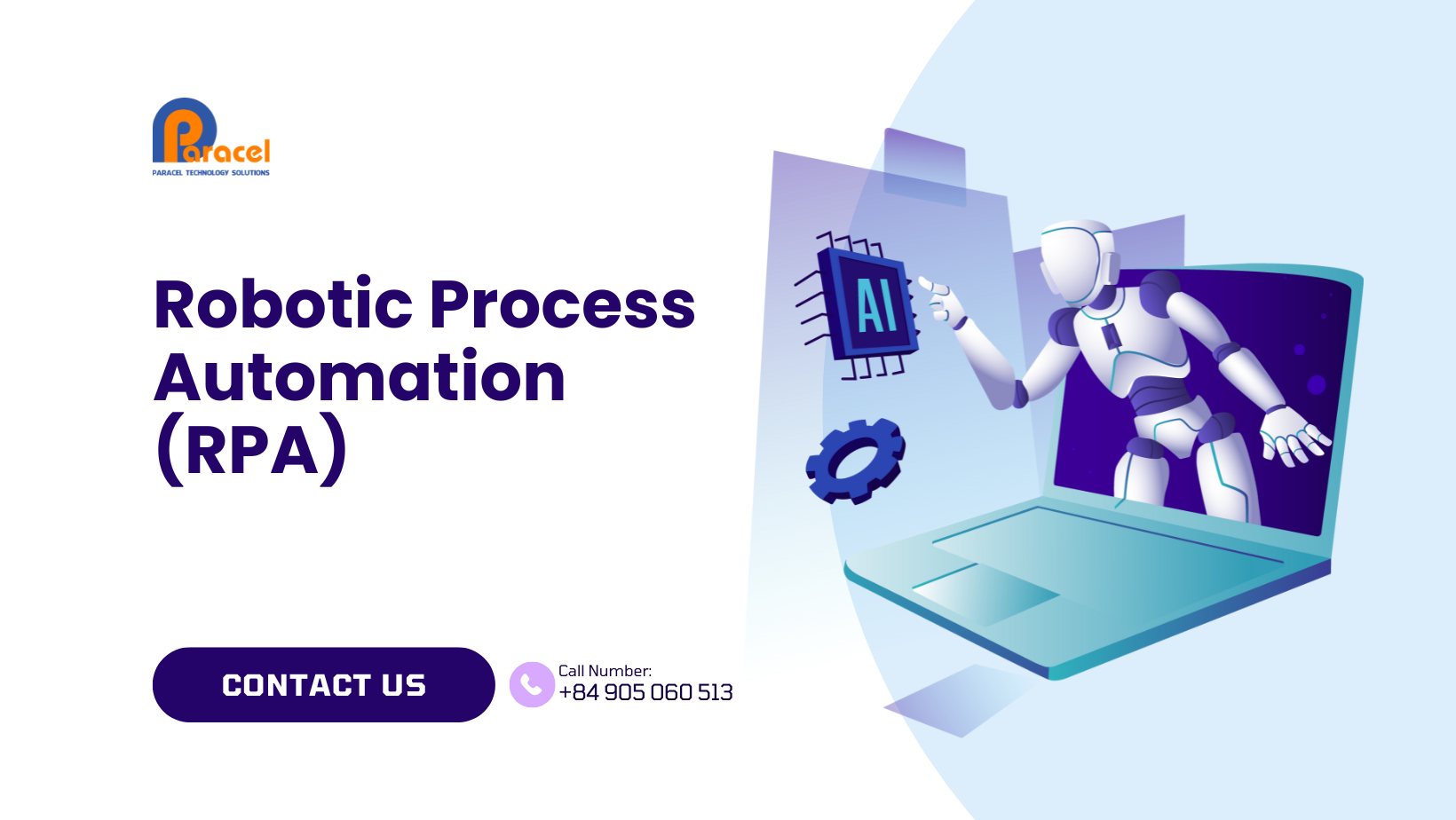There are various approaches to implementing ERP. Among them, the four most common implementation ERP methods include Big Bang, Phased rollout, Agile, and Parallel. These methods are considered crucial keys to the success of ERP projects. Therefore, finding the most suitable method to implement ERP in your business is essential. Understanding the advantages and disadvantages of each method will help businesses make informed decisions.

A. Why choosing the appropriate Implementation ERP method is important for businesses?
Implementing ERP not only establishes a solid and successful foundation for the transition and deployment of ERP systems within a business but also plays a decisive role in determining how the ERP system will be deployed and integrated into the current working environment of the business. The ERP implementation method clearly defines the process, timeline, resources, and approach to deployment, aiming for consistency, efficiency, and success in the transition process. Choosing the right ERP implementation method will contribute to optimizing system performance, improving business processes, and enhancing the competitiveness of the business. To understand more clearly, it can be presented as follows:
- Optimizing the transition process: Every business is unique and has different requirements for ERP system deployment. Choosing the appropriate method contributes to optimizing the transition process by accurately meeting the needs and expectations of the business.
- Ensuring flexibility and adaptability: A suitable ERP implementation method provides flexibility and adaptability. This allows businesses to adjust requirements and priorities during deployment, ensuring flexibility and the ability to adapt to changes in the business environment.
- Minimizing risks: Selecting the right ERP implementation method helps minimize risks during the transition. The method is adjusted to ensure consistency, accuracy, and stability of the system during deployment.
- Enhancing performance and efficiency: A suitable ERP implementation method enhances the performance and efficiency of the business. By effectively utilizing deployment methods, businesses can maximize the benefits of the ERP system, improve business processes, and enhance competitiveness.
- Saving time and resources: Choosing the appropriate ERP implementation method helps businesses save time and resources. An efficient method maximizes resource utilization and minimizes deployment time, enabling businesses to quickly benefit from the new ERP system.
So, which implementation method is suitable for your business? Let’s analyze each method in depth below.
B. Implementation of ERP Methods
I. Big Bang Method
The Big Bang method is an approach to ERP deployment where a business transitions from its old system to the ERP system all at once. Instead of deploying in phases or smaller stages, the Big Bang method involves implementing the entire ERP system within the same timeframe.
In this method, all business processes, from financial management, inventory management, human resources management to customer management, are converted to the new ERP system simultaneously. This requires careful preparation, detailed deployment planning, and the availability of sufficient resources to ensure success.
Advantages of the Big Bang Method:
Among the benefits of the Big Bang method, a prominent point is its ability to deploy quickly. In this way, businesses can carry out the entire system conversion in a short period, saving time and enhancing efficiency. Simultaneously, deploying the entire system at once also ensures consistency and compatibility between different parts of the ERP system.
Disadvantages of the Big Bang Method:
The Big Bang method also brings the disadvantage of high risk. Implementing the entire system at once requires careful preparation and risk control to avoid disruptions affecting business operations.
Another disadvantage is the deployment time, requiring consensus and close coordination from all departments in the business. Data preparation, employee training, and ensuring system readiness can take significant time and effort. This poses a challenge in maintaining an effective deployment process without significantly impacting the daily operations of the business.
Which type of business is suitable for the Big Bang ERP deployment method?
The Big Bang deployment method is typically suitable for small to medium-sized businesses, especially those looking to transition quickly from old systems to ERP systems.
Additionally, this method is also suitable for businesses undergoing significant changes in organizational structure or business processes. For enterprises seeking breakthroughs and comprehensive changes, the Big Bang deployment may be a suitable choice.
However, this method is not suitable for large enterprises with high flexibility requirements. Large businesses often have complex subsystems and business processes, and deploying the entire system at once can cause disruption and difficulties in the transition process.
II. Phased Rollout Deployment Method
The Phased Rollout deployment method involves implementing the ERP system in stages or phases. Instead of deploying the entire system all at once, this method divides the deployment process into smaller stages.
In each stage, a small part of the ERP system is deployed and integrated into the current business environment. Subsequent stages continuously deploy different parts of the system until the entire system is deployed and operating synchronously.
Advantages of the Phased Rollout Method:
The Phased Rollout method provides flexibility and adaptability. Businesses can focus on each small part of the ERP system in detail and ensure stability before proceeding with further stages. This helps minimize risks and allows for adaptation during the deployment process.
The Phased Rollout method allows businesses to focus on the most important priorities and deliver value from the early stages. Deploying in phases helps employees and departments gradually adapt to the new system, minimizing disruptions in workflow and ensuring that performance is not significantly affected.
Disadvantages of the Phased Rollout Method:
Implementing in phases can prolong the deployment timeline. Breaking down the deployment process into smaller stages may extend the overall ERP system deployment timeline. Businesses need patience and careful management to ensure consistency and adherence to schedules.
The Phased Rollout method requires close coordination and interaction between departments within the business. Deploying in phases necessitates cooperation and ongoing communication between departments to ensure compatibility and consistency across the entire system.
Which Businesses Are Suitable for the Phased Rollout Method?
The Phased Rollout method is suitable for large, complex businesses that require high flexibility. These businesses often have multiple departments and complex business processes, and deploying the entire system simultaneously can lead to disruptions and difficulties during the transition.
Businesses that need to make changes gradually or undergo significant changes in organizational structure or business processes may also consider this method. Implementing in phases allows for flexible adaptation and provides opportunities to assess and evaluate effectiveness before deploying the entire system.
III. Agile Deployment Method
The Agile deployment method focuses on executing in short stages known as “Sprints” and emphasizes continuous interaction and feedback between the deployment team and customers. Small deployment stages are planned and executed in short cycles, typically ranging from one to three weeks, during which new features and functionalities are developed and deployed.
Advantages of the Agile Method:
The Agile method offers high flexibility, allowing businesses to adapt quickly to environmental changes. Businesses can adjust project requirements and priorities in real-time, based on continuous feedback from customers. This helps maintain consistency and collaboration between the business and customers.
The Agile method fosters transparency and interaction during deployment. Short cycles enable customers and deployment teams to continuously review and assess progress, ensuring accurate development and alignment.
Disadvantages of the Agile Method:
One of the main limitations of the Agile method is the requirement for high interaction and commitment from customers. Businesses must be able to actively engage and provide continuous feedback during deployment. If customers are not actively involved or unable to provide timely feedback, the deployment process may encounter difficulties.
Deployment timeframes may also be longer compared to other methods. Implementing in short cycles requires careful attention and focus from the deployment team, which can impact the time and resources allocated for deployment.
Which Businesses Are Suitable for the Agile Method?
The Agile deployment method is suitable for businesses operating in dynamic and continuously changing business environments. For businesses seeking rapid and flexible deployment to meet new requirements, the Agile method provides significant advantages.
Small-scale businesses or startups often prefer the Agile method. Deploying in short cycles allows small businesses to test and experiment with products before full deployment, minimizing risks and optimizing the development process.
The Agile method is not suitable for businesses with rigid business requirements and processes that demand high accuracy and consistency. For large-scale businesses with complex processes, this method may pose challenges in managing and coordinating large-scale deployments.
IV. Parallel Deployment Method
The Parallel deployment method is characterized by the simultaneous operation of both the old and new systems coexisting during the testing phase. During this process, data and business processes are performed simultaneously on both systems to ensure consistency and accuracy. After testing and confirming that the new system works well, the old system will be phased out, and the entire new system will be adopted.
The Parallel method allows businesses to continue operating through the old system while simultaneously deploying the new system. This helps minimize risks and ensures consistency during the transition process.
Advantages of the Parallel Deployment Method:
The Parallel deployment method provides high safety and reliability. Businesses can continue operations through the old system while simultaneously testing and evaluating the new system. This ensures stability and accuracy in business operations.
The Parallel method minimizes risks and verifies the correctness of the new system before fully transitioning to its use.
Disadvantages of the Parallel Deployment Method:
This method requires significant resources and effort. Running two systems simultaneously demands resources, manpower, and time to maintain both systems running in parallel and ensuring accuracy.
Another challenge is ensuring consistency between the two systems. Synchronizing and updating data, business processes, and rules pose a challenge for businesses. Certainty and careful management are necessary to ensure consistency throughout the entire deployment process.
Which Businesses Are Suitable for the Parallel Deployment Method?
The Parallel deployment method is suitable for businesses that are particularly important and require high levels of security and reliability. For businesses with continuous and uninterrupted operation requirements, the Parallel method provides safety and meticulous testing.
Large-scale organizations with complex business processes also often choose the Parallel method. By implementing two systems simultaneously and checking consistency between them, businesses can ensure that business processes are not overly disrupted during the transition.
The differences between current ERP deployment methods are clear and significant. However, to implement ERP effectively, various factors need to be considered. Seeking assistance from ERP experts will help businesses make informed decisions in this process.
Ready to implement ERP? Contact Paracel today for a seamless solution!




